| Weight | 350 g |
|---|---|
| Color | Black Leather, Dark Brown Leather, Cognac Leather, Light Brown Leather |
| Material Ornaments | Brass, nickel silver |
| Seam | Without seam, Yellow seam, White seam |
| Arrangement Ornaments | Classic arrangement, arrangement variant |
| Belt tip | flower-tip, heart tip |
| Belt length | 90cm (Hip circumference 77cm), 95cm (Hip circumference 82cm), 100cm (Hip circumference 87cm), 105cm (Hip circumference 92cm), 110cm (Hip circumference 97cm), 115cm (Hip circumference 102cm), 120cm (Hip circumference 107cm), 125cm (Hip circumference 112cm), 130cm (Hip circumference 117cm) |
Appenzeller configurator belts
$112.30 - $151.61
Put together your own Appenzeller belt or Chüeli belt in 4 cm width, decorated with brass or nickel silver ornaments, made from 100% sustainable cowhide.
No time to configure? Click here for the Classic in stock;
Delivery time: CH 10-20 days, worldwide 15-25 days
Shipping: CH free of charge, EU & worldwide 20 CHF
VAT: Shipping to the EU incl. VAT up to 150 EUR (IOSS)
67 Bewertungen für Konfigurator Appenzeller Gürtel
Tips for measuring: The circumference measured at the height of the belt loop plus an additional 13 cm gives the correct belt length. Example: Circumference 91 cm plus 13 cm gives 104 cm. The optimal belt length in this case is 105 cm.

Belt as a gift: An existing belts can also be measured: The length from the buckle to the most commonly used belt hole corresponds to Hip circumference, i.e. take this length and add 13cm, which gives the belt length.

Caution: Never measure the entire belts , as belts have belt ends of different lengths.
Belt sizes adults
| Belt size | hip circumference |
|---|---|
| 90cm | 75-79cm |
| 95cm | 80-84cm |
| 100cm | 85-89cm |
| 105cm | 90-94cm |
| 110cm | 95-99cm |
| 115cm | 100-104cm |
| 120cm | 105-109cm |
| 125cm | 110-114cm |
| 130cm | 115-119cm |
Leather with a promising future
We use 100 percent sustainable cowhide, which we buy from "Traceable Leather" source. The hides for this are purchased from Fairfleisch , a company that only slaughters animals from organically certified farms and pays attention to the best possible conditions and short transport distances (no more than 30km).
The tanning is chrome-free and vegetable-based, carried out by a traditional company in southern Germany, so we can trace where and how the cow lived and how the tanning took place.
Variations of the arrangement / belt tip
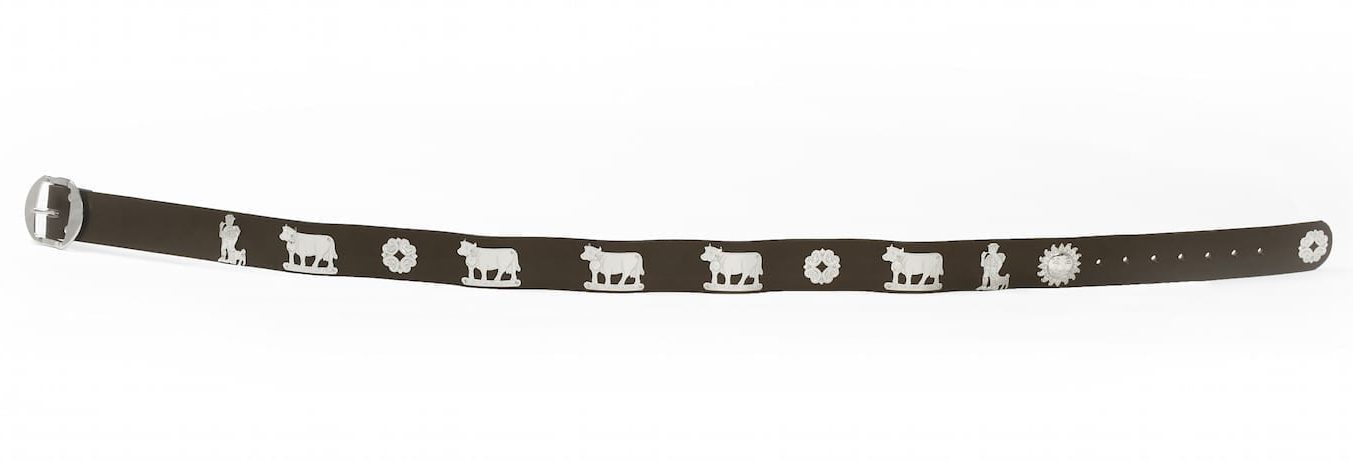


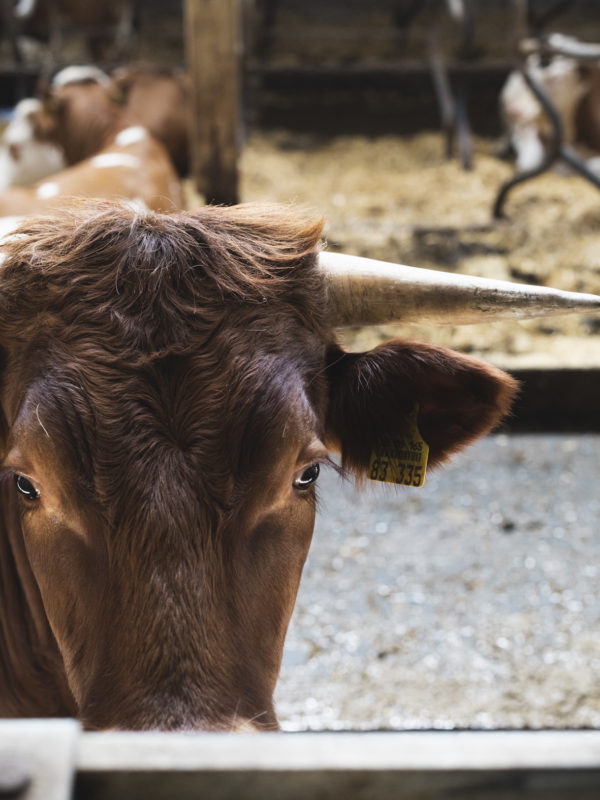
Handicraft from Appenzellerland
The Appenzell belt is a piece of old Swiss tradition. The belts used to be made of handmade metal fittings showing Alpine motifs such as alpine dairymen, suns, ornaments and cows. The more ornaments there were on the belt, the richer the wearer was.
Today there are only a handful of producers left in Appenzell. Daniel Fuchs is one of the few and a third-generation saddler. Much has remained the same: The cutting of the leather, the arrangement of the elements, the ornaments are, however, only made by hand in individual cases. The brass and nickel silver ornaments are stamped, but always according to the respective pattern of the Sennensattler. They are thus the signature of the maker and the eye of the connoisseur recognises a Fuchs, Fässler or Bachmann.

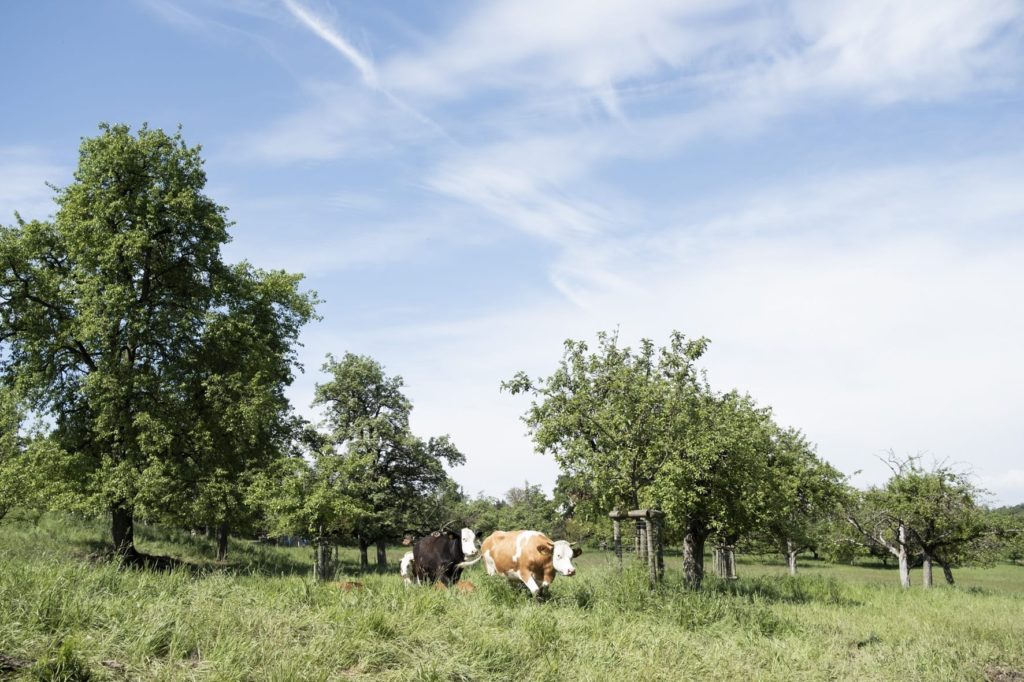
Promising for the future
Leather
We use 100 percent sustainable cowhide. We obtain the hides for this from Fairmeata company that only slaughters animals from organically certified farms and pays attention to the best possible conditions and short transport distances (no more than 30km) during slaughtering. We mainly work with raw hides from dairy cows.
The tanning is chrome-free and vegetable-based, carried out by a traditional company in southern Germany, so we can trace where and how the cow lived and how the tanning took place.
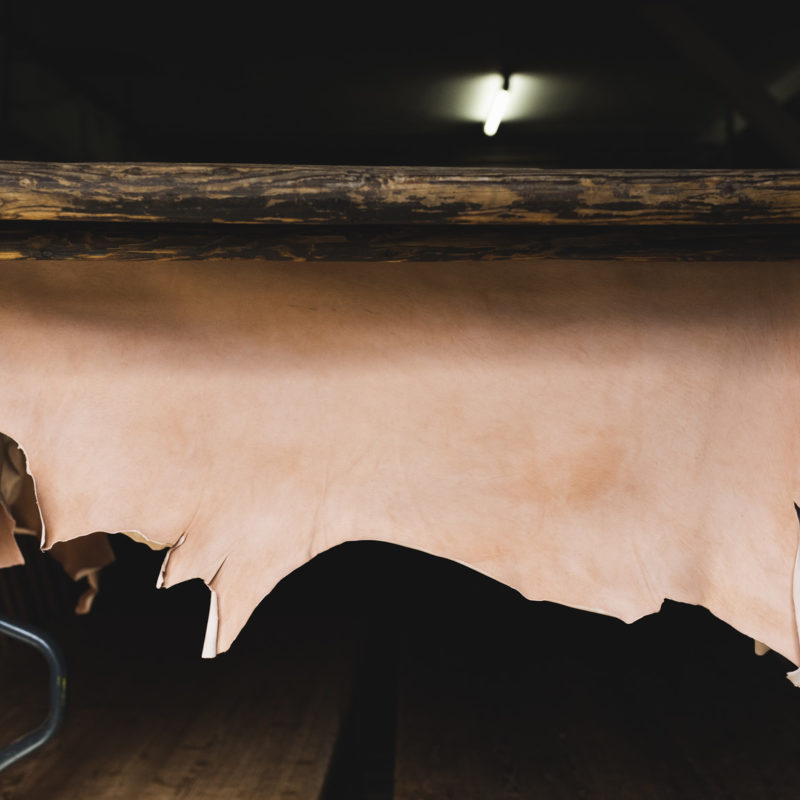
Variations of the arrangement / belt tip


Handicraft from Appenzellerland
The Appenzell belt is a piece of old Swiss tradition. The belts used to be made of handmade metal fittings showing Alpine motifs such as alpine dairymen, suns, ornaments and cows. The more ornaments there were on the belt, the richer the wearer was.
Today there are only a handful of producers left in Appenzell. Daniel Fuchs is one of the few and a third-generation saddler. Much has remained the same: The cutting of the leather, the arrangement of the elements, the ornaments are, however, only made by hand in individual cases. The brass and nickel silver ornaments are stamped, but always according to the respective pattern of the Sennensattler. They are thus the signature of the maker and the eye of the connoisseur recognises a Fuchs, Fässler or Bachmann.







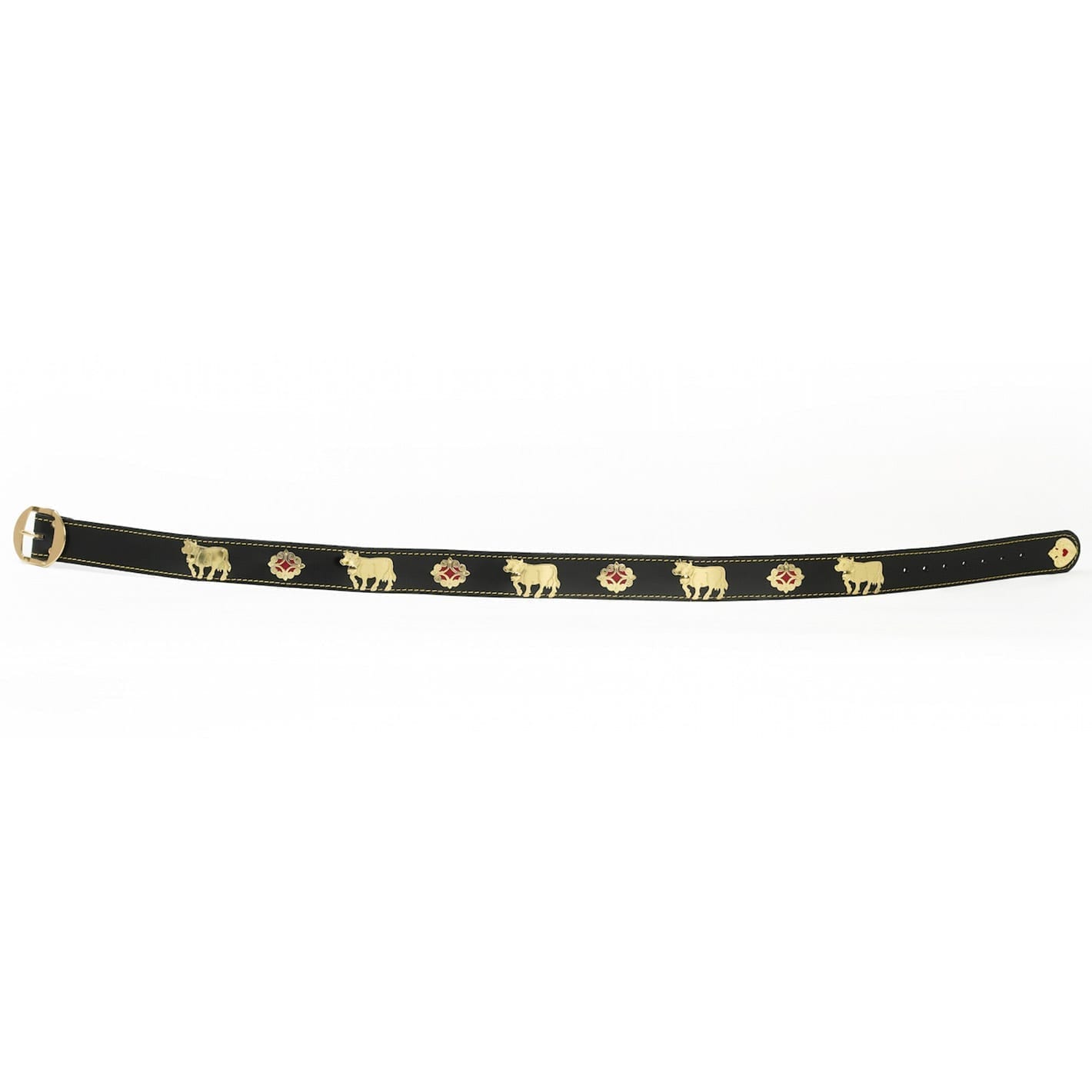

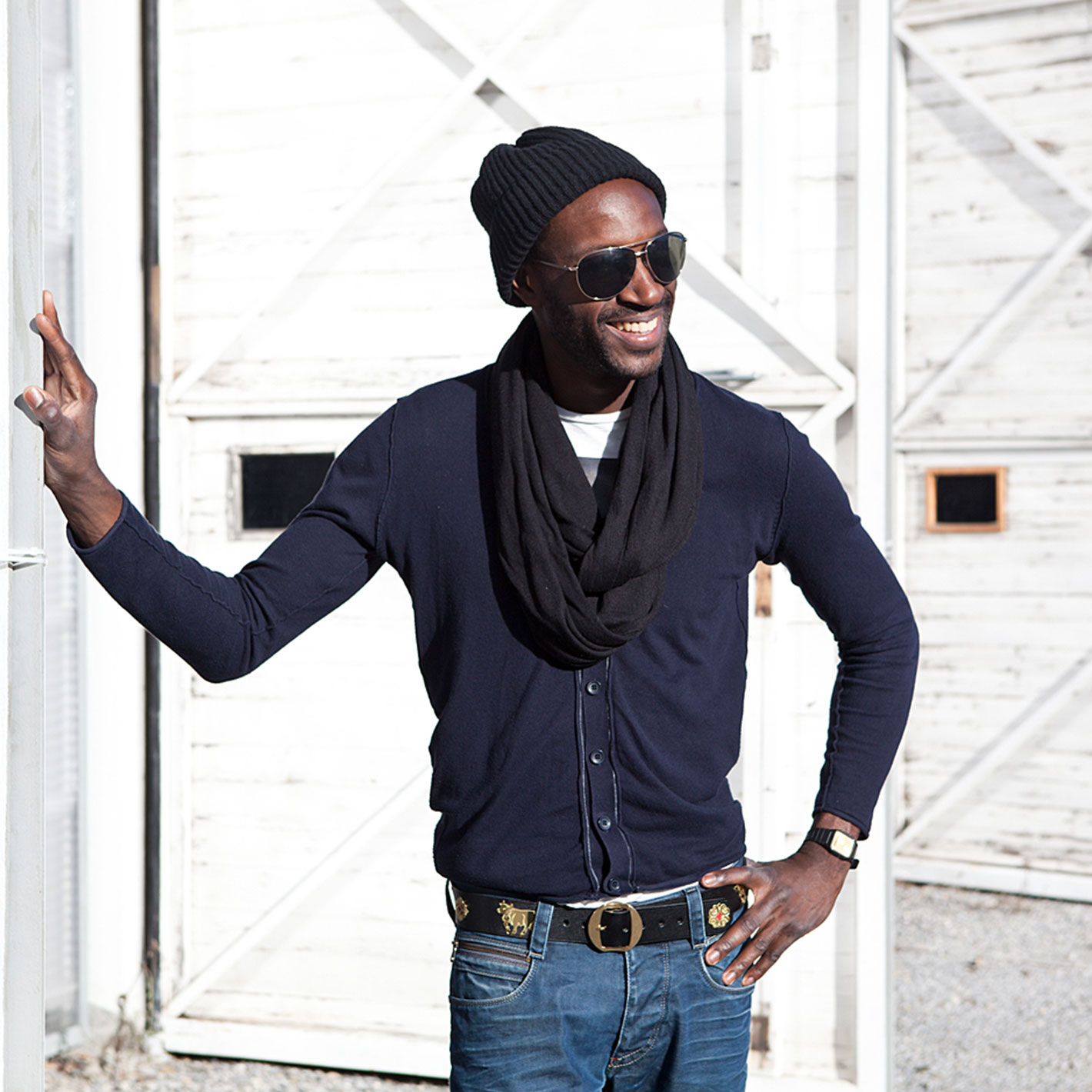

 There are no products in the shopping cart.
There are no products in the shopping cart.
walter mächler (Verifizierter Besitzer) –
das ist mein vierter gurt in blau
Karin (Verifizierter Besitzer) –
Das Geburtstagskind hat sich riesig über den Gürtel gefreut. Schnelle Lieferung in schöner Verpackung. Nur zu empfehlen.
Matthias Senn (Verifizierter Besitzer) –
Super schöner Gurt, hat perfekt gepasst.
Claudia M. (Verifizierter Besitzer) –
Ich liebe diese Gürtel und habe mega Freude an meinem neuen braunen. Qualität ist 1A, den ersten trage ich seit 7Jahren, fast jeden Tag und er sieht eigentlich fast noch aus wie neu. Die Lieferzeit war super schnell. Absolute Empfehlung
Esther Lehmann –
Wunderbar. Trägt ein holländischer Hund da oft im AR. Und macht Werbung in Gouda. Herzlichen Dank!
Tanja –
Wunderschöner Gürtel.
Großartiger Service bei Umtausch!!!!
absolute Weiterempfehlung
Karin (Verifizierter Besitzer) –
Sehr schöner und wertiger Gurt.
Man sieht das Handwerk/ Kunsthandwerk. Wird durchs tragen immer schöner, ist ein wunderbares Accessoire.
Der Gurt wird jetzt schon geliebt 💕
Aemmer Markus (Verifizierter Besitzer) –
Alles tiptop, gute Qualität und schnelle Lieferung.
Immer wieder gerne ⭐️⭐️⭐️⭐️
Cornel Ledergerber (Verifizierter Besitzer) –
Sehr schöne Gürtel. Super Verarbeitung. Ich trage den Gürtel jeden Tag.
Perfekter Reparatur-Service – und kostenlos. Wo gibt es das noch. Kompliment dem Meister und dem gesamten Team.
Simon (Verifizierter Besitzer) –
Mein Lieblingsgurt!😊👍würde diesen nie mehr zurück geben!
Andreas (Verifizierter Besitzer) –
endlich mal ein richtiger gurt
Alexis –
Superbe ceinture, la qualité est là (j’ai pris le modèle classique). On peut la porter pour de nombreuses occasions!
Bühlmann Christine (Verifizierter Besitzer) –
Jedermann/Frau kann den Gurt tragen, schöne Verarbeitung, weiches Leder
Stephan Ebert (Verifizierter Besitzer) –
Gurt ist genauso wie ich ihn mir vorgestellt habe, auch der Versand hat einwandfrei geklappt. Dies war bereits die 2. Bestellung und sicher noch nicht die letzte, denn beim nächsten Mal werde ich den Gurt nicht verschenken, sondern mir selbst gönnen.
Peter (Verifizierter Besitzer) –
Topgürtel
Roger –
Schöner Gurt mit gelber Naht
Roger (Verifizierter Besitzer) –
Trug 20 Jahre denselben Appenzeller Gurt jeden Tag, es wurde Zeit für einen neuen, habe mir ein Weihnachtsgeschenk gemacht, und mit gelber Naht ist er einfach traumhaft schön.